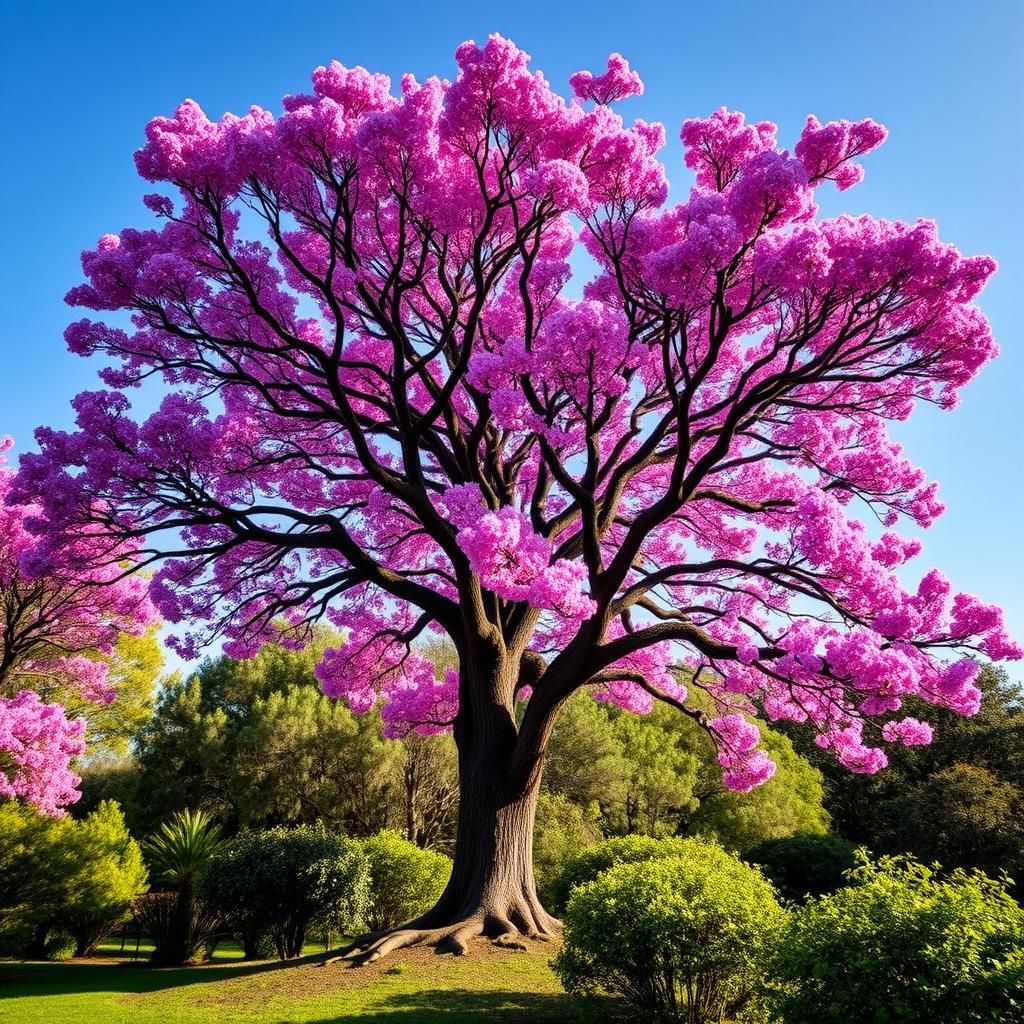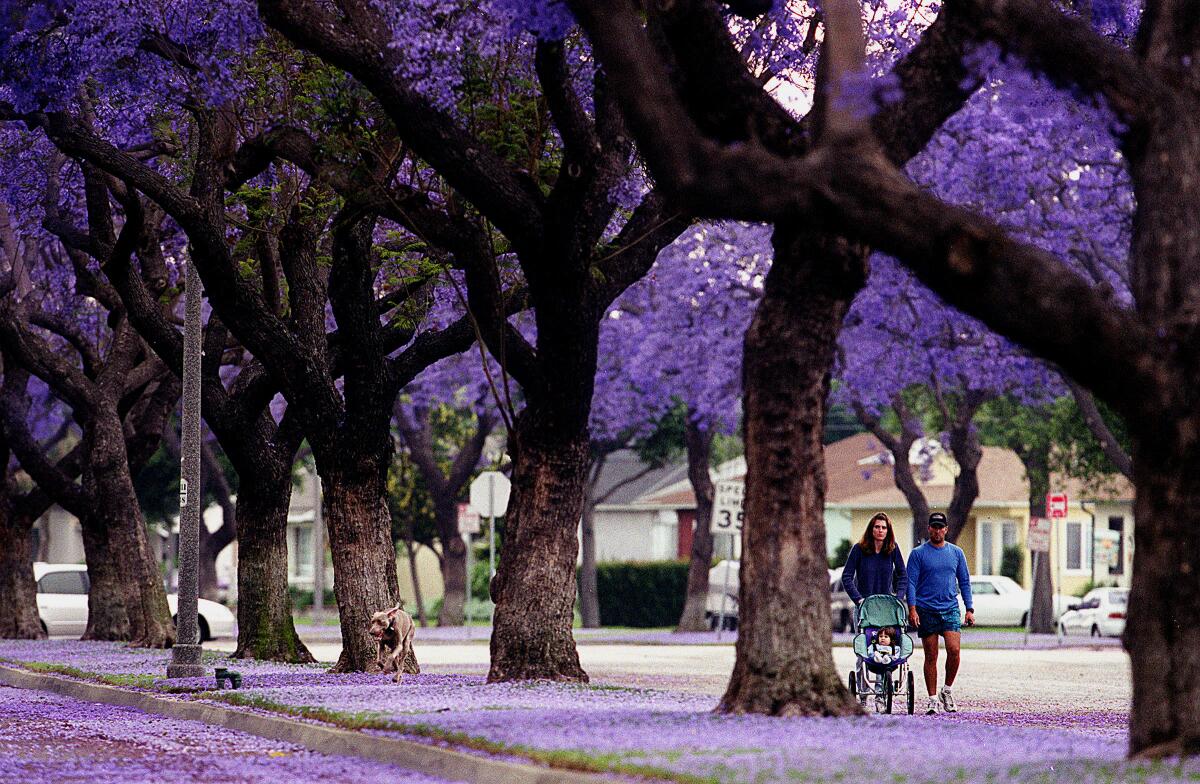The Ultimate Guide to the Jacaranda Illawarra Flame Tree: Care, Features, and Landscape Uses

The Jacaranda Illawarra Flame Tree, known for its stunning, vibrant flowers and impressive structure, is a popular choice among landscape enthusiasts and gardeners alike. This ultimate guide delves into the essential aspects of caring for this remarkable tree, highlighting its unique features and the various ways it can enhance outdoor spaces. From its striking appearance that captivates the eye to its adaptability in different environments, the Jacaranda Illawarra Flame Tree offers both beauty and functionality. Whether you are considering planting one or simply wish to learn more, this comprehensive resource will provide valuable insights into its cultivation and landscape uses.
Jacaranda Illawarra Flame Tree: A Stunning Addition to Landscapes
The Jacaranda Illawarra Flame Tree, known scientifically as Brachychiton acerifolius, is a striking tree native to the eastern coast of Australia, particularly around the Illawarra region. This deciduous tree is celebrated for its exceptional beauty, particularly when it is in full bloom, displaying a magnificent array of vibrant red to orange cup-shaped flowers that create a stunning visual spectacle. Beyond its aesthetic appeal, the Illawarra Flame Tree also provides beneficial shade and habitat for local wildlife, making it a cherished component of both urban and rural landscapes. Its relatively fast growth and adaptability to various soil types enable it to thrive in a variety of environments, further enriching gardens and parks where it is planted.
Botanical Characteristics
The Jacaranda Illawarra Flame Tree reaches an average height of 10 to 20 meters and can spread up to 10 meters in width. The tree has a distinctive trunk with a smooth grey bark and broad, star-shaped leaves that can add a lush green backdrop to any landscape. Its flowering season typically occurs in late spring to early summer, with the vibrant flame-colored blossoms contrasting beautifully against the deep green foliage. This combination of characteristics makes the tree not only a focal point in gardens but also an attractive choice for shaded areas.
Cultural Significance
In Australia, the Jacaranda Illawarra Flame Tree holds considerable cultural significance. It is often associated with the arrival of spring and is celebrated in various festivals, particularly in regions where it is abundant. The tree is also featured in local art and photography, symbolizing beauty and resilience. Its presence in public parks and streets adds to the cultural landscape, marking seasonal transitions and events throughout the year.
Care and Maintenance
Caring for a Jacaranda Illawarra Flame Tree requires minimal maintenance once established. It thrives in well-drained soil and prefers full sun exposure, making it suitable for gardens with adequate light. Regular watering is essential during the establishment phase, particularly in dry periods, but mature trees demonstrate good drought resistance. Pruning is recommended to remove dead or crossing branches and to maintain the tree’s shape. Fertilization can also enhance blooming, especially if a specific flowering boost is desired.
Pest and Disease Resistance
The Jacaranda Illawarra Flame Tree is generally resistant to many common pests and diseases, making it an ideal choice for gardeners who prefer low-maintenance plants. However, it may occasionally experience issues with pests such as scale insects or aphids, which can be managed with appropriate horticultural practices. Additionally, providing adequate air circulation and avoiding overwatering can prevent root rot and other fungal diseases. Maintaining the health of the tree helps ensure its longevity and vibrant blooms.
Uses in Landscaping
The Jacaranda Illawarra Flame Tree serves various uses in landscaping beyond its ornamental value. Its broad canopy provides ample shade, making it a favorite choice for parks, streetscapes, and residential areas. The tree can also be utilized as a focal point in garden design, where its striking flowers create seasonal interest. Furthermore, it supports local biodiversity by providing habitat for birds and insects, enhancing the ecological value of landscaped areas.
| Characteristic | Description |
|---|---|
| Height | 10 to 20 meters |
| Flower Color | Red to orange |
| Leaf Shape | Star-shaped |
| Soil Preference | Well-drained soil |
| Sun Requirement | Full sun |
What is the downside of jacaranda trees?

The downside of jacaranda trees can encompass various aspects such as maintenance issues, environmental impacts, and challenges related to their growth and adaptability. While these trees are admired for their stunning purple flowers and provide shade, there are several disadvantages to consider.
Maintenance and Clean-Up
One major downside of jacaranda trees is the extensive cleanup required during their flowering season. The fallen flowers can create a mess, particularly on driveways, sidewalks, and gardens. This can lead to several issues:
- Labor-Intensive Cleaning: Homeowners may need to sweep and rake regularly to manage the fallen petals, which can accumulate quickly.
- Slippery Surfaces: The fallen flowers can make pathways slippery, posing a risk of accidents.
- Affection for Pests: Stagnant debris can attract pests, which may cause further challenges in maintaining the area.
Allergies and Health Concerns
Some individuals may experience allergies due to jacaranda trees. The production of pollen and decaying flowers can lead to health issues:
- Pollen Allergy: Jacaranda trees release significant amounts of pollen, potentially aggravating asthma and other allergy symptoms.
- Respiratory Issues: The accumulation of fallen debris can contribute to poor air quality, particularly during decomposition.
- Skin Irritation: Some people might experience skin irritation from contact with the sap or decaying flowers.
Root System Problems
Jacaranda trees have an extensive root system that can create issues for nearby structures. The root expansion can lead to:
- Damage to Foundations: The aggressive root growth can compromise foundations of homes and other buildings.
- Impact on Utilities: Roots may interfere with underground piping and infrastructure, leading to costly repairs.
- Sidewalk Buckling: The roots can elevate sidewalks and driveways, creating trip hazards for pedestrians.
Invasive Growth Behavior
In certain regions, jacaranda trees can display invasive characteristics that might disrupt local ecosystems. Their growth can adversely affect the following:
See also:
- Competitiveness: Jacarandas can outcompete native plants for resources such as light, water, and nutrients.
- Biodiversity Loss: These trees may lead to a decline in biodiversity by overshadowing other species.
- Altered Soil Composition: Their root systems can change soil chemistry, affecting other plants and organisms.
Short Lifespan and Longevity Issues
Despite their beauty, jacaranda trees tend to have a relatively short lifespan compared to other tree species. This may manifest in:
- Frequent Replacement: Homeowners may find themselves needing to replace trees every few decades.
- Pest and Disease Vulnerability: They are susceptible to various pests and diseases that can shorten their lifespan.
- Management Costs: The costs of maintaining and replacing dying trees can add up over time.
How big do Illawarra flame trees get?

Illawarra flame trees, scientifically known as Brachychiton acerifolius, are renowned for their striking appearance and vibrant flowers. Typically, these trees can reach heights of 30 to 40 feet (approximately 9 to 12 meters) and are known for their broad, spreading branches. The canopy can spread as wide as 30 feet (around 9 meters), providing ample shade and a stunning visual display during their flowering season. The growth rate can vary depending on conditions, but under ideal circumstances, they can grow quite rapidly, reaching their mature size in 15 to 20 years.
Growth Rate of Illawarra Flame Trees
The growth rate of Illawarra flame trees is influenced by several factors including soil quality, water availability, and sunlight.
- Optimal Growth Conditions: These trees thrive in well-drained soils and require a sunny location to reach their full height and expressed flowering.
- Water Needs: Adequate watering in the first few years is crucial, as young trees are more sensitive to drought conditions.
- Nutrient Supply: Providing the right nutrients can significantly enhance the growth rate and overall health of the tree.
Height Variations in Different Environments
Illawarra flame trees may exhibit height variations based on their growing conditions, including soil type and climate.
- Tropical vs. Temperate Climates: In tropical climates, they may grow taller compared to temperate zones where growth rates are more limited.
- Urban vs. Rural Settings: Urban environments may hinder growth due to pollution and limited root space, while rural areas typically allow for larger sizes.
- Pot vs. Ground Growth: Trees grown in pots usually remain smaller than those planted directly into the ground.
Canopy Spread Characteristics
The canopy spread of Illawarra flame trees is as impressive as their height, often providing a wide shade area.
- Branching Structure: Their broad branches create a dense canopy that is aesthetically pleasing and functionally useful for shade.
- Impact on Surroundings: The spacious canopy can influence the growth of nearby plants by blocking sunlight and affecting soil moisture.
- Importance for Wildlife: The expansive canopy provides a habitat for various bird species and insects, enriching local biodiversity.
Factors Affecting Maximum Height
Several external factors can limit the maximum height that Illawarra flame trees can achieve.
- Soil Quality: Poorly drained or nutrient-deficient soils can stunt growth, limiting the tree's potential height.
- Climate Conditions: Extreme weather conditions, such as prolonged drought or frost, can significantly affect growth potential.
- Maintenance Practices: Regular pruning and care can influence the tree's ability to grow higher and spread more effectively.
Longevity and Size Achievement
Illawarra flame trees are relatively long-lived and can maintain their size for several decades.
- Typical Lifespan: These trees can live upwards of 100 years, reaching their maximum size within the first few decades of life.
- Growth Stages: The tree will undergo several growth stages, with significant size increases typically occurring in the juvenile and early mature phases.
- Environmental Adaptation: Over the years, trees adapt to their environment, which can further influence their overall growth and size.
Where should you not plant a jacaranda tree?

Planting a jacaranda tree requires careful consideration of various environmental factors and surrounding infrastructure. Here are the areas and conditions where you should avoid planting a jacaranda tree:
In Areas with Poor Drainage
Planting a jacaranda tree in locations that have poor drainage can lead to root rot and other fungal diseases. These trees thrive in well-draining soil where water can flow freely. Poor drainage can suffocate roots and promote disease.
- Flood-prone regions where water accumulates after heavy rains.
- Heavy clay soils that do not allow water to drain properly.
- Low-lying areas that retain moisture and do not dry out quickly.
Near Underground Utilities
It is essential to avoid planting jacaranda trees close to underground utilities such as gas, water, and telecommunications lines. The extensive root system of the jacaranda can disrupt and damage these systems.
- Utility easements should be respected to prevent future damage.
- Gas lines may be at risk if roots penetrate the protective casing.
- Water pipes can be fractured by strong root growth, leading to costly repairs.
Under Power Lines
Jacaranda trees can grow to a significant height, making them unsuitable for planting under or near power lines. Their growth can interfere with electrical service and be hazardous during storms.
See also:
- Low clearance issues can cause branches to collide with power lines.
- Maintenance costs increase if the tree needs frequent trimming.
- Potential fire hazards if branches come in contact with electrical lines.
In Small Gardens or Confined Spaces
Jacaranda trees can grow large and wide, making them impractical for small gardens or confined spaces. Their expansive root system and canopy can overshadow other plants and cause competition for resources.
- Crowding other plants can lead to underperformance in the garden.
- Limited space might not accommodate their growth pattern.
- Aesthetic balance can be disrupted, overshadowing smaller plants and flowers.
In Urban Settings with Limited Light
Jacarandas flourish in areas with plenty of sunlight. Planting them in urban environments where buildings or tall structures restrict light can hinder their growth and flowering.
- Dimly lit spaces can result in poor bloom and stunted growth.
- Surrounding foliage can compete for sunlight, affecting health.
- Pollution in urban areas can negatively impact tree vitality.
Can jacaranda trees grow in the US?
Yes, jacaranda trees can grow in the U.S., primarily in the warmer regions. The jacaranda (Jacaranda mimosifolia) is a tropical and subtropical tree indigenous to South America, particularly in countries like Argentina and Brazil. In the United States, their successful growth largely depends on the climate and environmental conditions of certain states.
Climate Requirements for Jacaranda Trees
Jacaranda trees thrive in warm climates with plenty of sunlight. They prefer areas that offer:
- Full Sunlight: Jacarandas require at least 6 hours of direct sunlight each day to promote healthy growth and blooming.
- Moderate Winter Temperatures: These trees can tolerate temperatures down to about 20°F (-6°C) but will not survive in regions with prolonged frost.
- Low to Moderate Rainfall: Jacarandas do well in areas with moderate rainfall and do not like overly wet soils, which can lead to root rot.
Regions in the U.S. Suitable for Jacaranda Trees
Jacaranda trees are most commonly found in the southern parts of the United States. Notable areas include:
- California: Particularly in areas like Los Angeles and San Diego, where the Mediterranean climate is ideal for jacarandas.
- Florida: Regions with a subtropical climate, such as Miami, support the growth of jacaranda trees.
- Texas: Parts of southern Texas also provide suitable conditions for the growth of this beautiful tree.
Soil Requirements for Jacaranda Trees
The soil quality plays a significant role in the health of jacaranda trees. Their preferences include:
- Well-Drained Soil: Jacarandas do best in sandy or loamy soils that do not retain excessive moisture.
- Poor to Moderate Fertility: They are not overly demanding and can thrive in soil that is not highly fertile.
- Acidic to Neutral pH: The ideal soil pH for jacarandas ranges between 6.0 and 7.0, allowing for optimal nutrient uptake.
Care and Maintenance for Jacaranda Trees
Proper care ensures that jacaranda trees grow healthily and bloom beautifully. Important maintenance aspects include:
- Watering: Young jacaranda trees require regular watering, but mature trees need less frequent irrigation unless under extreme drought conditions.
- Pruning: Pruning is recommended to remove dead or damaged branches, which helps maintain the tree's shape and health.
- Pest Management: Monitoring for pests, such as scale insects and spider mites, is essential as these can affect the health of the tree.
Common Issues with Jacaranda Trees in the U.S.
Although jacarandas can thrive in specific areas of the U.S., they can also face challenges:
- Cold Damage: In regions where winter temperatures drop significantly, jacarandas may suffer from cold stress or damage.
- Diseases: Fungal infections like root rot can occur if the trees are planted in poorly drained soils.
- Aging Trees: Older jacarandas may become susceptible to structural issues if not regularly maintained and monitored for health.
Questions from Our Readers
What is the Jacaranda Illawarra Flame Tree?
The Jacaranda Illawarra Flame Tree (Brachychiton acerifolius) is a beautiful ornamental tree native to Australia, known for its stunning display of bright orange-red flowers that bloom in late spring and summer. The tree can reach heights of up to 30 meters and is often found in tropical and subtropical regions. Its vibrant blossoms make it a popular choice for landscaping and urban gardens.
How to care for the Jacaranda Illawarra Flame Tree?
Caring for a Jacaranda Illawarra Flame Tree involves providing full sun exposure and well-drained soil for optimal growth. Regular watering is essential, especially during dry seasons, but it is important to ensure the soil does not become waterlogged. Pruning is also recommended to maintain its shape and promote healthy flowering.
What are the benefits of planting a Jacaranda Illawarra Flame Tree?
Planting a Jacaranda Illawarra Flame Tree offers numerous benefits, such as providing shade with its broad canopy and enhancing the aesthetic appeal of your landscape with its stunning flowers. Additionally, it attracts various birds and pollinators, contributing to local biodiversity. This tree is also low-maintenance, making it an excellent choice for gardeners.
Is the Jacaranda Illawarra Flame Tree suitable for all climates?
The Jacaranda Illawarra Flame Tree thrives best in warm, temperate to tropical climates and may struggle in colder regions with frost. It is important to assess the local climate and ensure the climate is suitable for this species to flourish, as it prefers mild winters and plenty of sunlight for optimal health.
See also:

If you want to read more articles like The Ultimate Guide to the Jacaranda Illawarra Flame Tree: Care, Features, and Landscape Uses, we recommend you check out our Landscaping category.
Leave a Reply

Related Articles